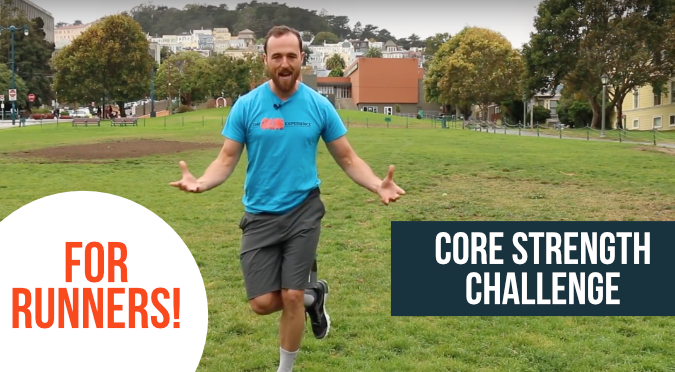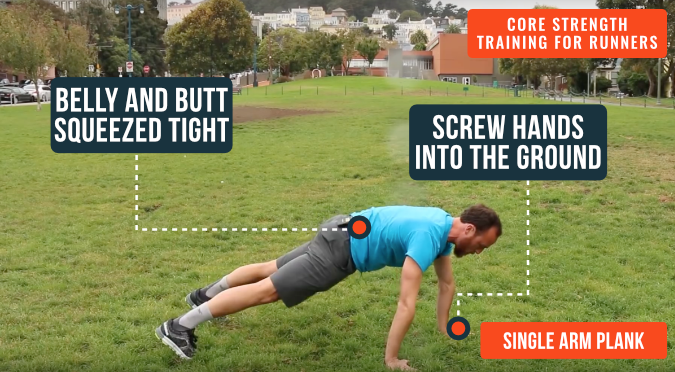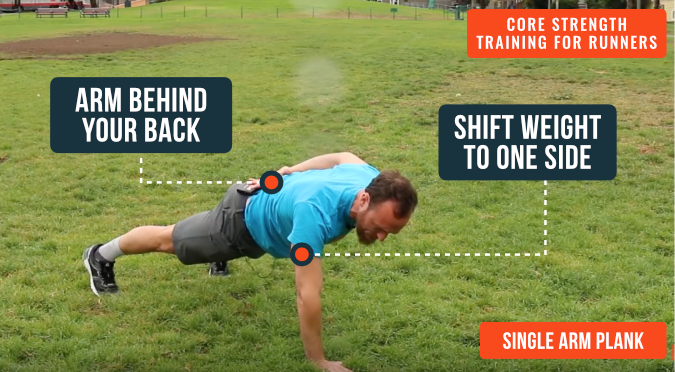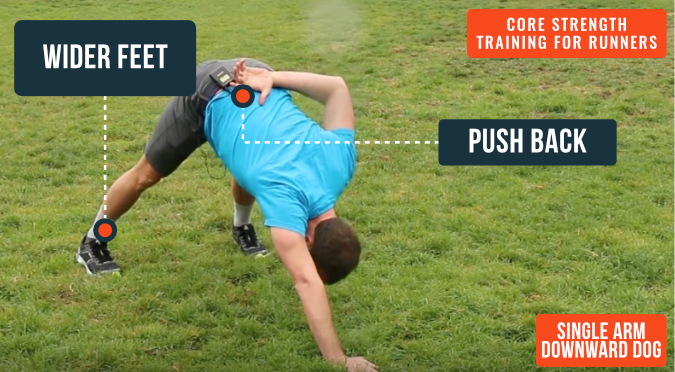Core Strength For Runners: Single Arm Challenge!

Core strength for runners isn’t just about getting that 6-pack… at least not just about that 🙂 Use this quick running challenge to ditch those collapsing hips and other bad run form habits in a matter of weeks.
Core Strength For Runners: How It Benefits Us Specifically
As runners, you’re doing a lot of the same thing. Right foot, left foot, right foot, left foot …
Some days a little faster, some days a little slower, some days up a hill, some days on a track…
Dialing in that run form needs to be an EVERYDAY, conscious effort.
Fatigue will always find you… so training your body to counteract it on its own is HUGE.
For many of us, one of the first things to suffer is the hip position as you transfer weight from one leg to the other.
Sitting into each hip becomes more and more exaggerated, creating all kinds of new impact for the knees, ankles, and feet to deal with.
Increased core strength can minimize those effects!
Core Strength For Runners: The Single Arm Plank To Downward Dog Challenge
Here’s how this will work:
- Find a straight arm plank.
- Squeeze the butt and low abs.
- Screw your palms into the ground: Fingers facing straight ahead, elbow pits twisted in an outward rotation to also face forward.

- From here, WITHOUT TWISTING YOUR HIPS OPEN TO THE SKY, take one arm off the ground and put hand behind your back.
- A lateral weight shift will help you take the hand off.

- Once you’re feeling solid here, you’ll slowly press into a one-armed downward dog position.
- Send the hips to the sky, dropping the heels to the ground.

- Again, both hips should be facing the ground from start to finish.
- From the downward dog you’ll come back to the one-armed plank.

- Hold the single-arm plank for 3 slow counts.
- From here press back to the downward dog.
- REPEAT 10 times per side.
And that’s it!
The amount your hips collapse when you run will directly mirror the amount your hips twist open as you transfer between the plank and downward dog.
ALSO: shaking in the low abdomen is totally NORMAL and a good sign of work left to be done!
Give this challenge a try once a week to keep track of your progress! You’ll see a difference in your running (and knee, ankle and foot pain) in no time!
For sticking with us to the end & getting the maximum output, check out our range of running training plans that cater all the aspects of running, be it beginner running, injury prevention, marathon training and a lot more!!!
